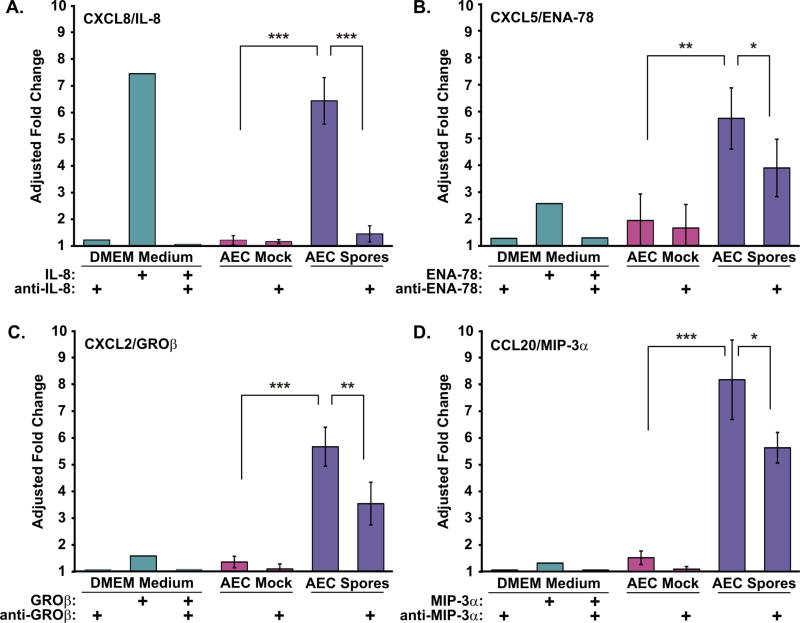Figure 8.
Type I-like AEC respond to B. anthracis spores by producing discrete neutrophil chemokines. Supernatants from AEC exposed to B. anthracis spores for 24 hours were tested for neutrophil chemotactic activity. Antibodies to specific chemotaxins were employed to confirm the dominant neutrophil chemokines present in the mock (violet bars) and spore-treated (blue bars) AEC supernatants. DMEM (AEC growth medium) amended with recombinant chemokines at the concentrations measured in AEC supernatants, chemokines plus specific neutralizing antibodies, or neutralizing antibodies alone as indicated were tested (green bars). Unamended DMEM provided the background activity (fold change = 1, not shown). DMEM and AEC supernatants were assayed in duplicate. Neutrophil chemotactic activity in the presence of (A) CXCL8/IL-8, (B) CXCL5/ENA-78, (C) CXCL2/GROβ, and (D) CCL20/MIP-3α neutralizing antibody. Chemotactic activity is expressed as the adjusted fold change over background and are the means ± SD of the three donors. Means of the AEC mock and spore-exposed supernatants were compared, and statistical significance was determined by one-way ANOVA with Tukey multiple comparisons test. * p ≤ 0.05, ** p ≤ 0.01, *** p ≤ 0.001.

